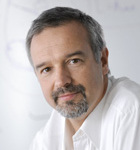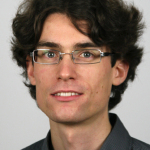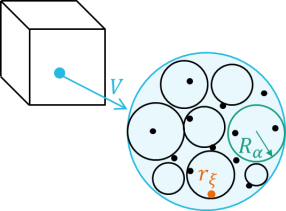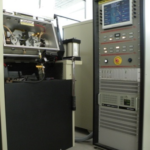M3 TCMPrecipSteel
| Prof. Dr.-Ing. Dierk Raabe | Dr. Dirk Helm |
 |
 |
| d.raabe@mpie.de | dirk.helm@iwm.fraunhofer.de |
| Dr.-Ing Martin Diehl | M.Sc. Lukas Kertsch |
 |
 |
| m.diehl@mpie.de | lukas.kertsch@iwm.fraunhofer.de |
Thermo-chemo-mechanical interactions due to thermally activated and/or mechanically induced processes govern the constitutive behaviour of metallic alloys during production and in service. Understanding these mechanisms and their influence on the material behaviour is of very high relevance for designing new alloys and corresponding thermomechanical processing routes. Besides direct mutual interactions, such as the temperature increase due to dissipation during plastic deformation, in turn leading to softening of the material, further indirect coupling phenomena take place. In the context of metallic materials, such further phenomena comprise recrystallization, grain coarsening, phase transformation and precipitate formation.
The central goal of the project is the thermodynamically consistent modelling and simulation of strong thermo-chemo-mechanical coupling phenomena in applie d materials. Specifically, we aim at developing thermodynamically consistent models for describing the complex coupling between dislocation-based plasticity, recovery, recrystallization, grain coarsening and formation of second phase precipitates in steels. Within a fundamental thermodynamic framework two complementary thermodynamically consistent material models for representing thermo-chemo-mechanically coupled processes in metals are developed. More specifically, a spatially resolved model and a mean-field model, both describing the interrelation between plasticity, recovery, recrystallization, grain coarsening and the evolution of precipitates are formulated and implemented.
 |
 |
| Spatially resolved microstructure model (left) and mean‐field approach (right). | |
Model development benefits significantly from the comparison to well-defined experiments. Therefore, advanced thermomechanical testing and microstructure characterisation are applied. Besides, quasi-in-situ experiments mapping the microstructure evolution of the considered model material during elevated temperatures at high spatial resolution provides experimental benchmarks.
 |
 Gleeble system for simulating thermomechanical processes. |
The models are numerically implemented and calibrated using the experimental results. The full-field model is implemented in the open source project DAMASK by MPIE Düsseldorf. Typical fields of application of the software tools include process design, process control, alloy design and virtual material characterisation.

